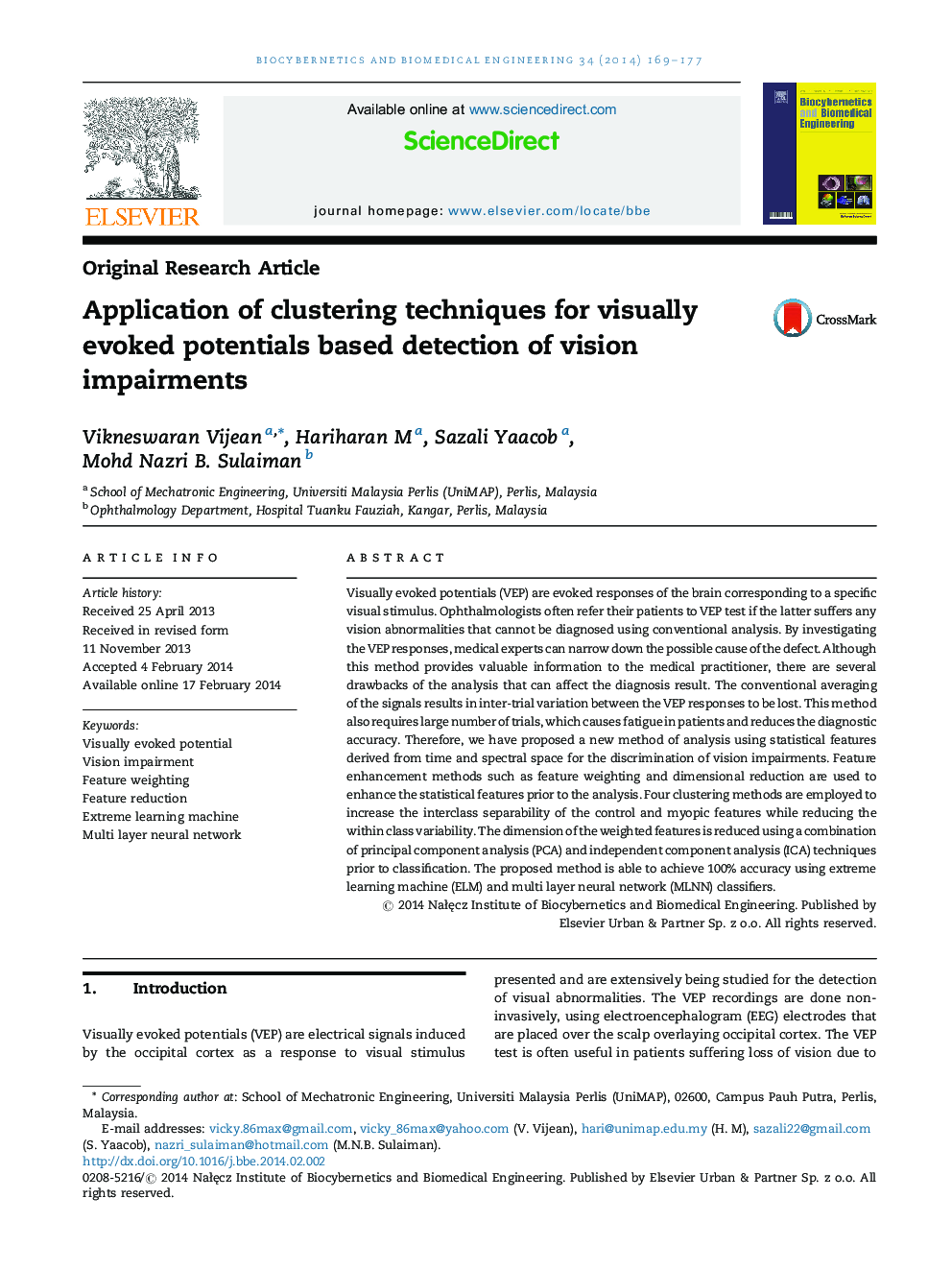| Article ID | Journal | Published Year | Pages | File Type |
|---|---|---|---|---|
| 5215 | Biocybernetics and Biomedical Engineering | 2014 | 9 Pages |
Visually evoked potentials (VEP) are evoked responses of the brain corresponding to a specific visual stimulus. Ophthalmologists often refer their patients to VEP test if the latter suffers any vision abnormalities that cannot be diagnosed using conventional analysis. By investigating the VEP responses, medical experts can narrow down the possible cause of the defect. Although this method provides valuable information to the medical practitioner, there are several drawbacks of the analysis that can affect the diagnosis result. The conventional averaging of the signals results in inter-trial variation between the VEP responses to be lost. This method also requires large number of trials, which causes fatigue in patients and reduces the diagnostic accuracy. Therefore, we have proposed a new method of analysis using statistical features derived from time and spectral space for the discrimination of vision impairments. Feature enhancement methods such as feature weighting and dimensional reduction are used to enhance the statistical features prior to the analysis. Four clustering methods are employed to increase the interclass separability of the control and myopic features while reducing the within class variability. The dimension of the weighted features is reduced using a combination of principal component analysis (PCA) and independent component analysis (ICA) techniques prior to classification. The proposed method is able to achieve 100% accuracy using extreme learning machine (ELM) and multi layer neural network (MLNN) classifiers.
